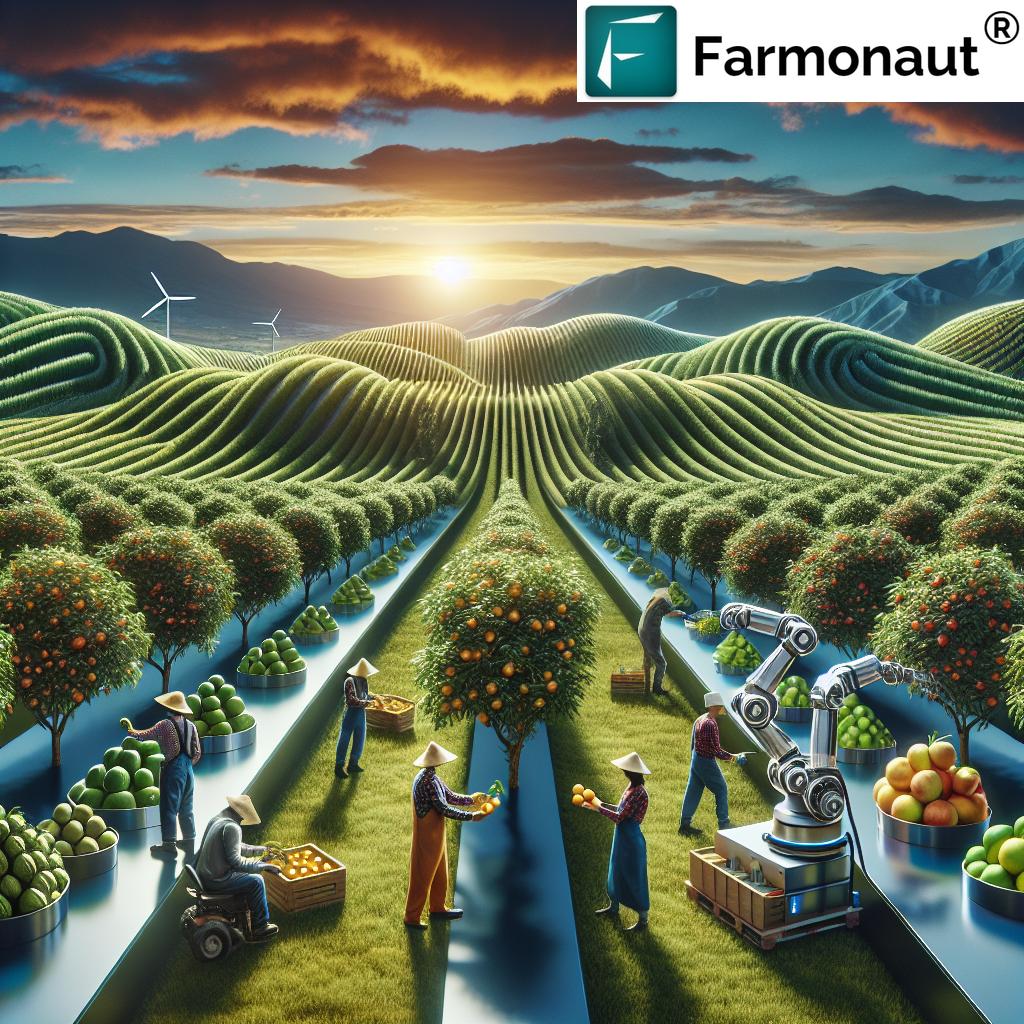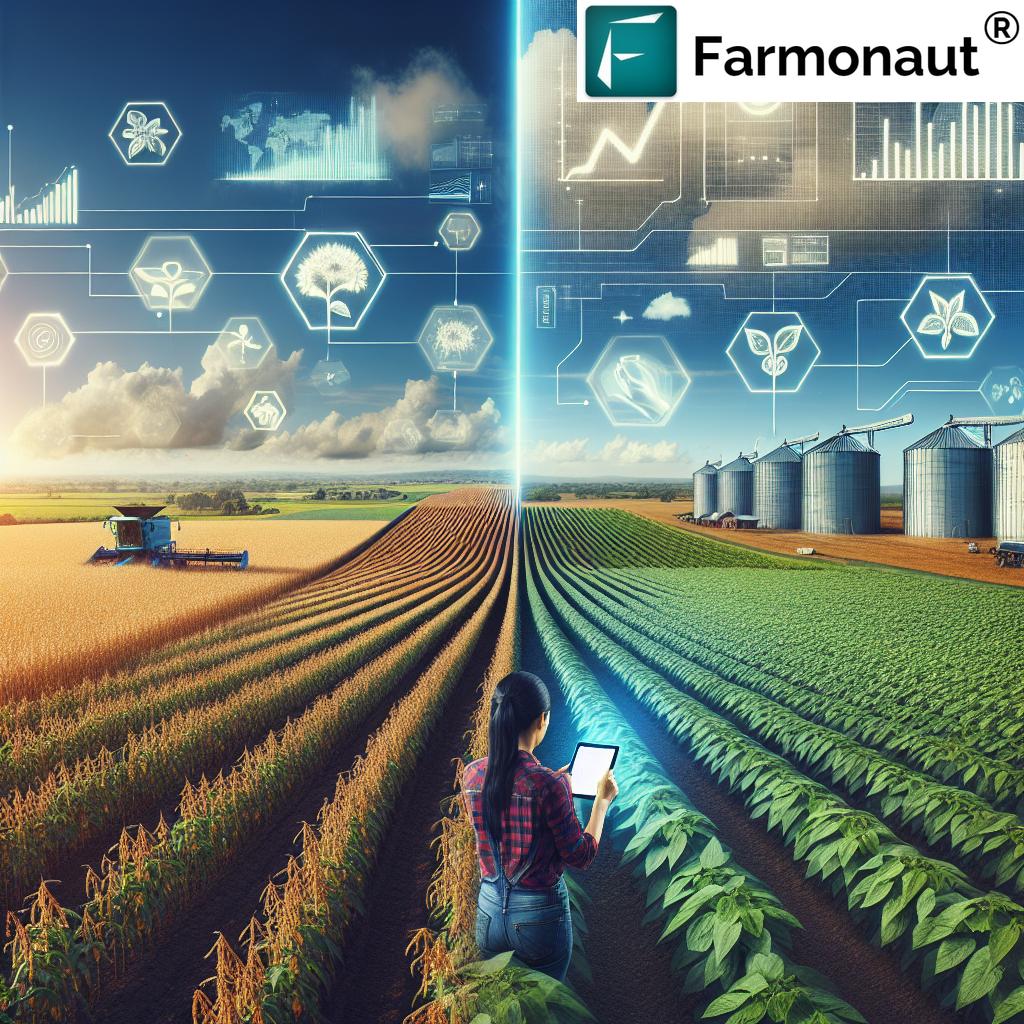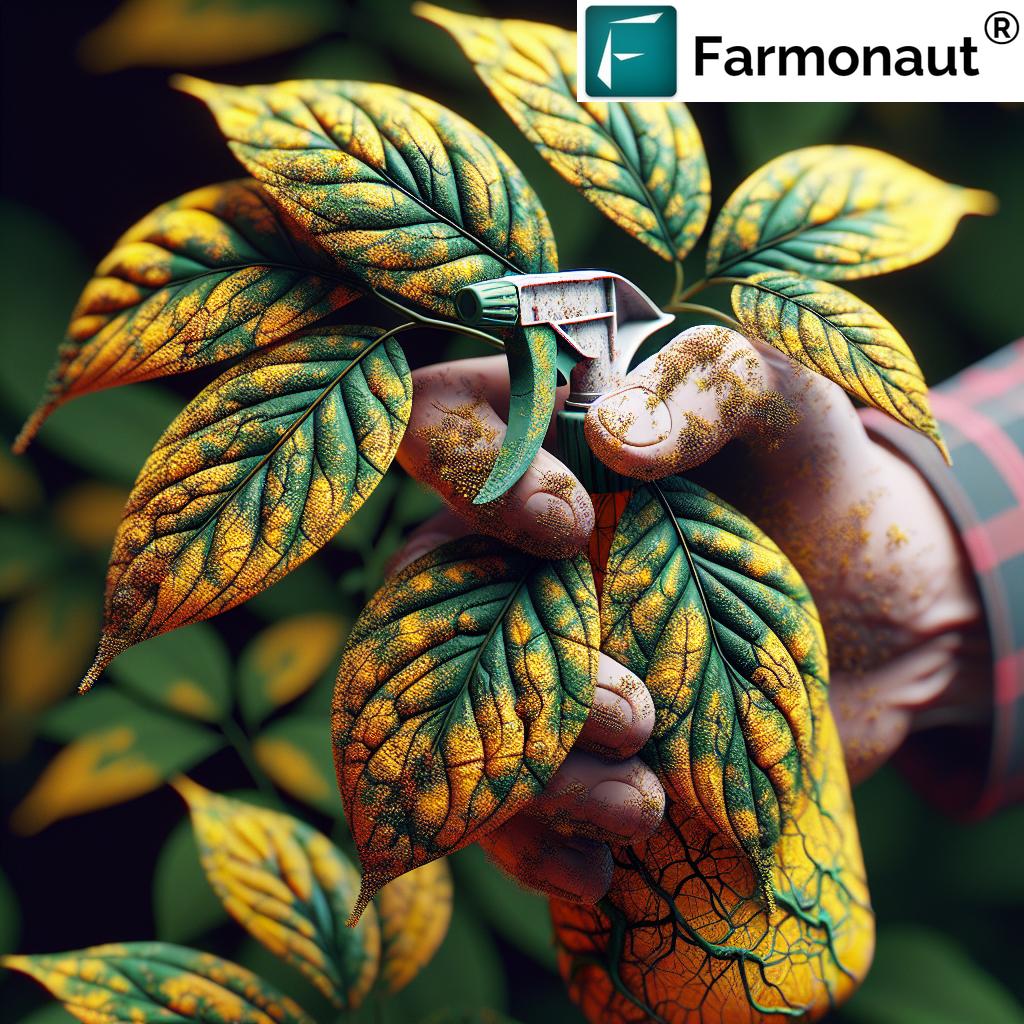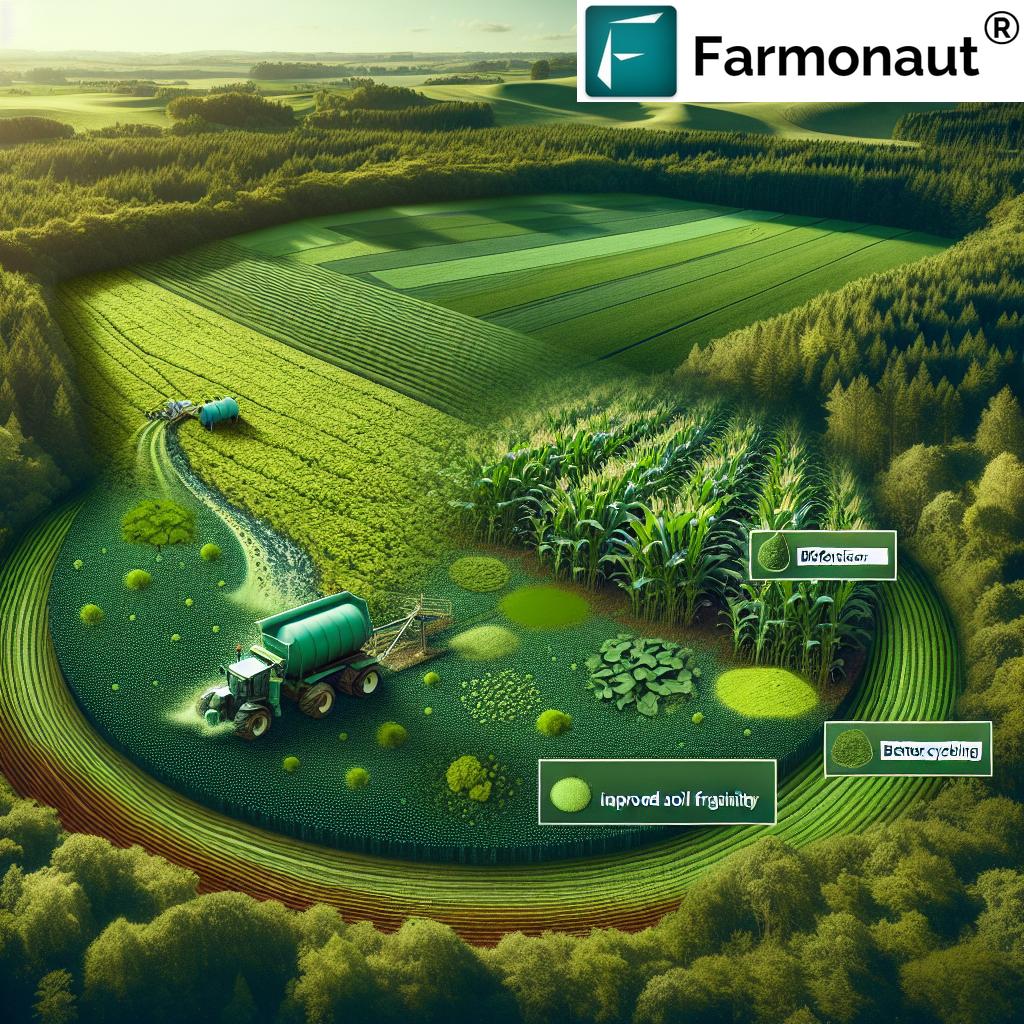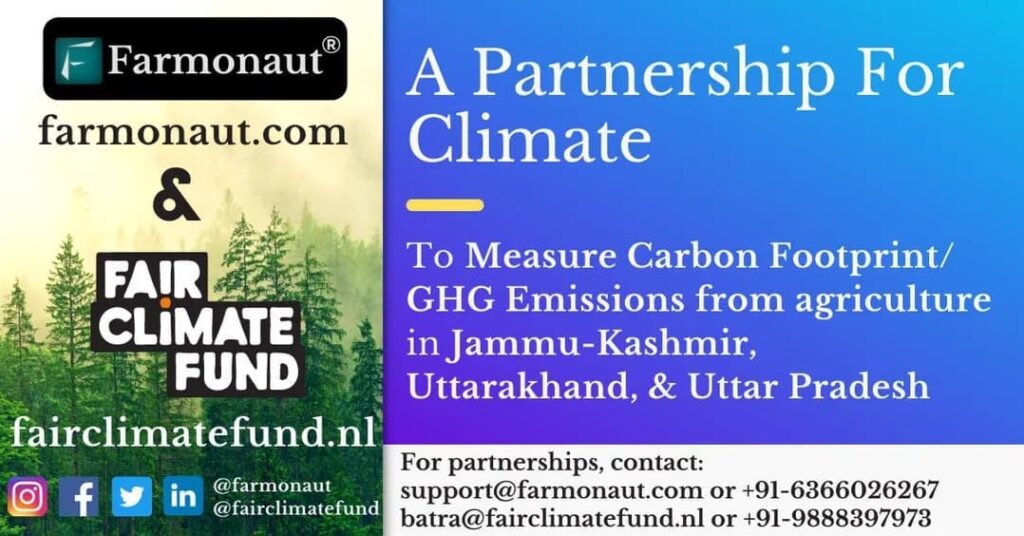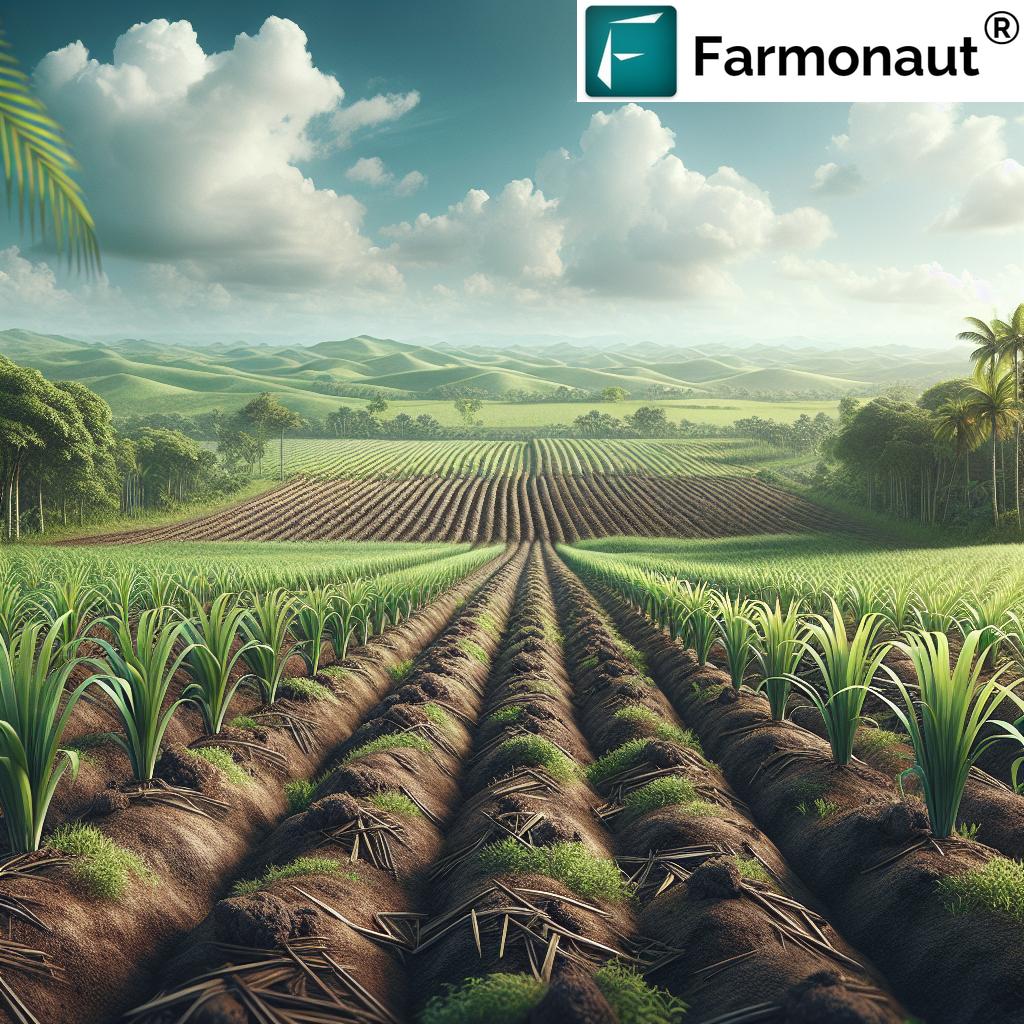Agriculture Product Innovation: AI, Urban, Sustainable 2025
- Introduction: The 2025 Revolution
- Trivia: Did You Know?
- AI for Agriculture Innovation: Precision Farming at the Forefront
- Urban Agriculture and Innovative Production: Farming at the Heart of Cities
- Emerging Agriculture Product Innovation & Sustainable Solutions
- Data-Driven Supply Chain, Traceability, and Blockchain in Agriculture
- Comparative Feature & Impact Table 2025
- Farmonaut: Future-Ready AI and Satellite-Based Innovation
- FAQ – Agriculture Product Innovation in 2025
Introduction: The 2025 Revolution in Agriculture Product Innovation
Welcome to 2025. Agriculture product innovation stands at the forefront of a technological revolution. This revolution is not only driven by groundbreaking methods—such as the deep integration of AI for agriculture innovation—but also by comprehensive changes reshaping the way food is grown, distributed, and consumed.
With global challenges like climate change, population growth, and resource scarcity intensifying, agriculture innovation has become critical in ensuring food security and sustainable development. Especially in urban environments, new agriculture product innovation and urban agriculture and innovative production models, powered by modern AI and data-driven approaches, are emerging as solutions for tomorrow’s world.
In this in-depth guide, we’ll explore:
- The transformative trends and technologies like artificial intelligence now enabling smarter, more sustainable farming
- How urban agriculture and innovative production help cities feed themselves
- The rise of sustainable products—from biofertilizers to lab-grown proteins
- The role of data, sensors, and blockchain in creating transparent, efficient supply chains
- How innovative agricultural products are shaping the future of agriculture
Stay with us as we delve into the remarkable world of agriculture innovation project s, future-ready systems, and the sustainable reimagining of food production.
“Over 60% of new agricultural products in 2025 will incorporate sustainable and future-ready technologies.”
AI for Agriculture Innovation: Precision Farming at the Forefront
AI for agriculture innovation is revolutionizing how crops are grown and managed. In 2025, artificial intelligence (AI) is one of the most transformative trends in modern agricultural practices. AI-powered solutions and systems have become integral in:
- Predicting weather and disease outbreaks
- Enhancing precision agriculture through satellite imagery, drones, and sensor data
- Optimizing irrigation, fertilization, and pest control
- Increasing yields and resource efficiency while minimizing environmental impact
Let’s look at the key features that make AI integration so powerful for agriculture product innovation:
How AI Empowers Precision Agriculture
AI-driven technologies use advanced algorithms to analyze data from sources such as satellites, drones, sensors, and detailed weather forecasts. This empowers farmers to make timely, informed decisions about:
- When to irrigate and how much water to use
- The best timing for fertilization to optimize yields
- Targeting pests and disease outbreaks with precision, reducing chemical use and cost
- Planning for harvesting based on weather patterns and crop health
For example, AI algorithms can now predict disease outbreaks on a field before any visible symptoms appear. This allows timely interventions that can save large quantities of crops, reduce losses, and minimize environmental damage.
Satellite Imagery, Drones, and IoT Sensors: The Data Backbone
The integration of satellite imagery, drones, and IoT sensors gives farmers instant data on:
- Crop health and soil conditions
- Water availability and needs
- Fertilizer requirements
- Early detection of diseases and pest threats
Farmonaut’s platform, for example, utilizes advanced large-scale farm management tools for real-time satellite-based monitoring. The ability to monitor fields, crop health (NDVI), and environmental impact brings unprecedented control and efficiency.
The role of AI drones in precision agriculture—how tech-driven insights are saving millions and maximizing yields.
Benefits of AI-Powered Precision Farming
- Resource Optimization: AI & data analytics ensure exactly the right amount of input (water, fertilizer, pesticides) is used.
- Yield Improvement: Farms experience higher yields and better consistency in crop output.
- Reduced Costs & Waste: Unnecessary applications are avoided, saving money and reducing environmental footprint.
- Real-Time Decision-Making: Immediate data and insights—no more guessing games.
AI Advisory: The Next Step in Smart Farming
AI-powered platforms are increasingly providing tailored advice to farmers—factoring in satellite data, historical weather patterns, and current field conditions. For instance, Farmonaut’s Jeevn AI Advisory System delivers customized strategies and real-time predictions, further enhancing agricultural productivity and operational efficiency.
This kind of predictive and prescriptive analytics in crop management helps reduce resource use, improves timing, and maximizes every square meter of cultivated land.
Take a closer look at Jeevn AI and the future of data-driven farming advisory in action.
Farmonaut’s Role in the AI Farming Revolution
At Farmonaut, our mission is to democratize access to AI and satellite-powered agricultural solutions. Our core technologies include AI-based satellite monitoring, blockchain traceability, and environmental impact (carbon footprint) tracking—providing affordable, real-time insights for every scale of farming.
With our API (see Farmonaut API and API developer docs), agritech startups, established agribusinesses, and financial services can directly integrate these capabilities into their workflows, fostering a new age of innovative agricultural products.
Urban Agriculture and Innovative Production: Farming at the Heart of Cities
Urbanization continues to rapidly expand urban populations, putting pressure on conventional farming land and food supply chains. By 2025, urban agriculture and innovative production techniques are gaining remarkable traction globally. Urban farming is quickly becoming a critical solution to address food scarcity and sustainability within cities.
Evolution of Urban Agriculture: Why Cities Need Farmlands
- Population Growth: Cities are now home to more than half the global population; this is only increasing, creating land scarcity and stretched food distribution systems.
- Reduced Transportation Costs & Carbon Emissions: Growing food locally means fewer food miles—cutting down on logistics costs and (thanks to shorter supply chains) reducing greenhouse gas emissions.
- Freshness and Local Engagement: Urban agriculture ensures quicker delivery of produce, often within hours of harvest, and strengthens community ties to food systems.
- Land Efficiency: Techniques like vertical farming allow cities to maximize food output within limited space.
Innovative Production Techniques Leading the Urban Farming Frontier
Key urban agriculture innovation projects include:
- Vertical Farming: Crops are stacked in climate-controlled, multi-level facilities, maximizing land use and productivity per square meter.
- Hydroponics & Aeroponics: Soil-free systems that use water or nutrient-rich mist for plant growth—using up to 95% less water than traditional methods.
- IoT Smart Monitoring: Sensors continuously measure humidity, nutrient concentration, and plant health, automating optimal growth conditions year-round.
- Automated Climate Control: AI-powered systems adjust lighting, temperature, and CO2 for peak plant performance, regardless of season.
Watch how smart tech is powering new farming methods inside city landscapes for a sustainable urban future.
Benefits of Urban Agriculture and Innovative Production
- Maximized Space Efficiency: Grow more in less space using vertical and stacked systems.
- Year-Round Production: AI and climate-tech make crop production viable 365 days a year—even in harsh climates.
- Significantly Less Water Usage: Hydroponics can reduce water use by up to 90% compared to traditional farming.
- Locally Grown = Fresh, Nutritious Food: Consumers get access to high-quality, just-harvested produce.
- Sustainable Resource Use: Urban farms often utilize waste heat, grey-water recycling, and renewable energy to minimize environmental impact.
- Resilience Against Supply Chain Disruptions: Short, local supply chains enabled by urban farms mean quicker recovery from global interruptions.
Explore how Farmonaut’s real-time monitoring services empower operators of vertical farms, urban hydroponic units, and aeroponic systems to optimize production and integrate with smart city infrastructure.
Emerging Agriculture Product Innovation & Sustainable Solutions
Today’s innovative agricultural products are pushing far beyond conventional crop varieties or fertilizers. By 2025, key trends include bioengineering, sustainable inputs, and alternative proteins—all designed to reduce environmental impact, optimize resource use, and respond to shifting global dietary trends.
Examples of Agriculture Product Innovation in 2025
- Genetically Enhanced Crops: Crops engineered for better nutrition, greater resistance to disease, pests, and climate-related stress (like drought & high salinity)
- Biotechnological Seed Coatings: Protective layers that increase germination success, resist soil pathogens, and improve early plant growth
- Sustainable Biofertilizers & Biopesticides: Replacing chemical-heavy inputs with natural, microbe-based products that enhance soil health and reduce runoff
- Alternative Proteins: Lab-grown meats, plant-based proteins, and cultured seafood reducing pressure on conventional livestock systems and mitigating environmental harm
- Zero-Waste Packaging & Circular Systems: Biodegradable materials and systems that recycle agricultural waste directly back into production cycles
Explore carbon farming, climate-smart solutions, and the rise of regenerative agriculture—vital for the future of sustainable food production.
How Emerging Agricultural Products Drive Productivity and Sustainability
- Yield Improvement: Engineered seeds and AI-optimized farm inputs enable higher and more stable yields
- Resource Efficiency: Bioinputs and high-efficient fertilizers cut water and chemical use, improving environmental outcomes
- Food Security: Drought-tolerant and pest-resistant varieties secure harvests even amid climate uncertainty
- Meeting Consumer Demand: Innovative sources of protein (such as cultured meats) cater to eco-conscious, health-focused consumers
The Equipment & Automation Boom
The introduction of AI-powered farm equipment—from autonomous tractors and robotic harvesters to telematics-enabled vehicles—reduces labor, improves logistical control, and enhances efficiency.
Watch the evolution of smart farming equipment for 2025 and see how AI telematics are revolutionizing modern agriculture innovation projects.
For those overseeing larger operations, our
fleet management tools
offer precise monitoring and optimization of agricultural machinery—reducing costs, enhancing safety, and boosting asset longevity across your farm.
Data-Driven Supply Chain, Traceability, and Blockchain in Agriculture
Digital innovation is transforming supply chains, enhancing transparency, accountability, and efficiency for all stakeholders. Real-time data sharing, blockchain technology, and traceability systems ensure safe, authentic, and sustainable food production and distribution.
Traceability Projects and Blockchain: Trust from Farm to Fork
-
Supply Chain Transparency:
Blockchain-enabled traceability records every stage of a product’s journey (seed, cultivation, harvest, processing, market)—reducing fraud and ensuring authenticity. -
Efficiency in Distribution:
Automated data recording and transparent ledgers minimize paperwork, cut delays, and quickly resolve disputes between suppliers, processors, and buyers. -
Food Safety:
Instant access to full production history enables fast recalls and ensures compliance with rising food safety standards worldwide.
Farm-to-Market Integration: Efficient, Data-Driven Access
- Weather Data Integration: Satellite- and sensor-based networks transmit real-time weather assessments directly to market platforms, helping farmers and distributors minimize risk.
- Market & Payment Data: Digital records and AI-driven platforms provide seamless access to credit, crop insurance, and fair market pricing.
- Carbon and Sustainability Tracking: Transparency not only tells consumers what they are eating but how it was grown—enabling more sustainable choices.
How satellite data, AI, and blockchain are shaping the future of supply chain traceability and transparency.
Empowering Communities and Reducing Inequality
Central to the agriculture innovation project movement is ensuring equitable technology access for smallholder farmers, urban collectives, and resource-strained regions. Integrative platforms offering affordable, scalable solutions empower communities, bolster productivity, and reduce inequality.
Want to take control of your urban or rural farming with affordable satellite-driven insights?
Comparative Feature & Impact Table: Innovative Agricultural Products for 2025
| Innovation Type | Description | Est. Adoption Rate 2025 (%) | Primary Benefits | Sustainability Impact |
|---|---|---|---|---|
| AI-Powered Drones & Satellite Tech | Real-time monitoring, data-driven AI decision tools for crop health, irrigation, and yield optimization | 48% | Increased yields, reduced input costs, precise pest/disease management | High |
| Urban Vertical Farming | Multi-level, climate-controlled environments for ultra-efficient city food production | 36% | Maximizes space, year-round harvests, hyper-local produce | High |
| Hydroponics & Aeroponics | Soil-free growing methods with water/mist-nutrient solutions that reduce land and water needs | 31% | 95% less water, scalable anywhere, reduced chemical runoff | High |
| Biotechnological Seed Coatings | Engineered seed treatments for enhanced germination, disease resistance, and growth | 54% | Boosts yield, curbs losses, low-input start | High |
| Sustainable Biofertilizers | Microbe-based/organic fertilizers minimizing chemical use and nutrient runoff | 61% | Enriches soil health, reduces environmental footprint | High |
| Lab-Grown & Plant-Based Proteins | Cultured meat, seafood, and non-meat alternatives to meet changing consumer preferences | 29% | Reduces animal farming reliance, eco-friendly, nutritional | Medium-High |
| Blockchain-Based Traceability | Digital product lifecycle tracking for transparency and trust in agri-supply chains | 44% | Food safety, trust, compliance | Medium |
| Autonomous Farming Equipment | Robotics, self-driving tractors, and AI telematics minimizing manual labor | 22% | Increases productivity, reduces human error, lowers labor costs | Medium |
Farmonaut: Future-Ready AI and Satellite-Based Innovation
At Farmonaut, we believe the future of agriculture lies in smart, sustainable, and accessible innovation. Our mission is to make satellite-driven insights and AI for agriculture innovation affordable and universal for all—from smallholder farmers in rural regions to urban agriculture entrepreneurs building tomorrow’s vertical farms.
What Makes Farmonaut a Market Leader in 2025?
- Satellite-Based Monitoring: Our platform leverages multispectral satellite imagery for in-depth crop and environmental monitoring—no expensive on-site hardware required.
- AI Advisory Systems: Real-time recommendations (irrigation, fertilization, harvest timing, pest risk) tailored for local conditions by analyzing massive data sets.
- Blockchain-Based Traceability: We empower agri-producers with secure, transparent supply chain tools—ensuring food authenticity from field to fork.
- Fleet & Resource Management: Our tools (see fleet management) cut operational costs by optimizing machine use and logistics.
- Environmental Impact Tracking: Monitor your carbon footprint (learn about carbon footprinting) in real-time, aligning agricultural operations with sustainability goals.
- Accessibility Across Platforms: Web app, Android, iOS, and API for universal accessibility and integration into business and government workflows.
FAQ – Agriculture Product Innovation in 2025
What are the biggest trends in agriculture product innovation for 2025?
The biggest trends are the integration of AI for agriculture innovation, urban agriculture and innovative production models (like vertical farming), and products focused on sustainability—such as biofertilizers, biotechnological seeds, and lab-grown proteins.
How does AI improve productivity and sustainability in agriculture?
AI uses data from satellites, drones, and sensors to provide precision farming solutions. This means better resource use, optimized fertilization, smarter irrigation, and targeted pest control—boosting yields and reducing environmental impact.
What role does urban agriculture play in feeding cities?
Urban agriculture allows cities to produce fresh food close to consumers, reducing transportation costs, emissions, and boosting local food security. Innovative production methods like vertical farming, hydroponics, and aeroponics maximize space and sustainability.
How do blockchain and traceability systems help agriculture in 2025?
Blockchain-based traceability solutions enhance supply chain transparency, build trust among consumers, and ensure the authenticity and safety of agricultural products.
How accessible are these technologies for smallholder farmers?
Companies like Farmonaut are making AI, satellite monitoring, and data insights affordable and easy to access via apps, web platforms, and open APIs—helping smallholder and urban farmers alike to benefit from the latest innovation.
Can these innovations help meet global climate goals?
Absolutely! With less water and chemical input, reduced waste, lower carbon emissions, and efficient resource management, innovative agricultural products and methods play a direct role in achieving sustainable development and climate security.
Conclusion: The Future of Agriculture Product Innovation
The future of agriculture is digital, data-driven, and sustainable. Innovations in AI, urban farming, biotechnology, and blockchain-based systems offer the promise of smarter, cleaner, and more responsive food production—key to nourishing a growing global population while conserving the planet’s resources.
At Farmonaut, we see the path forward as a combination of technology, ecological stewardship, and inclusive access. 2025 is just the beginning—agriculture’s next chapter will be defined by continual innovation, integration, and a steadfast commitment to sustainability.
Ready to step into the future? Explore our platform and join the new era of agriculture product innovation!







